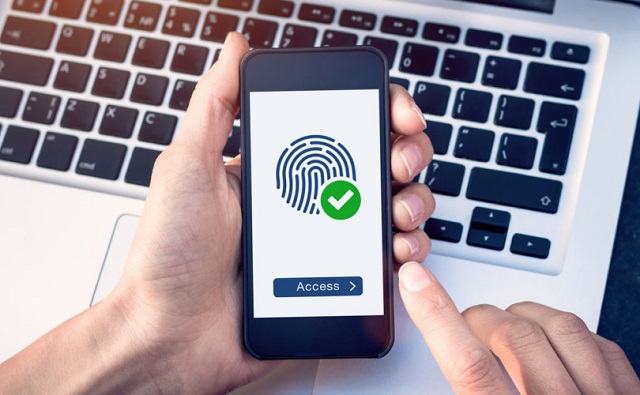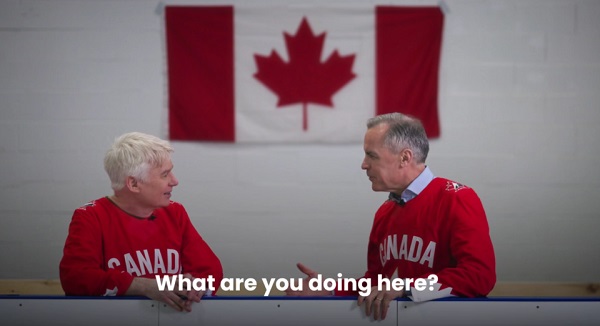Business
Federal government clearly misstates its economic record

From the Fraser Institute
“since 2015 Canada has posted some of the weakest economic growth numbers, measured on a per-person basis, in half a century”
“Denominator blindness” refers to situations where people fail to put what seem to be big numbers into proper context. The affliction is especially common among governments seeking to justify their spending and other policy decisions. In Canada, denominator blindness has become a central feature of the narratives peddled by many politicians.
For example, the Trudeau government’s recent economic update, which includes a forward by Finance Minister Chrystia Freeland where she notes that the International Monetary Fund expects Canada to have “the strongest economic growth in the G7 next year.” She also insists her government is fostering economic growth that “creates middle class jobs, raises incomes, and makes middle class communities more prosperous.”
Both claims lack context and misstate the government’s economic record.
Prosperity is measured using both a numerator, typically the amount of output the economy produces in a year, and a denominator, the size of the population. A larger population means the economic pie must be divided into more slices to estimate how much “output” is available to the average resident. With a rapidly expanding population, the economy must generate a lot more output merely to stop the individual pie slices from shrinking.
Minister Freeland is correct that Canada’s economy has been growing, both since the worst of the COVID shock in late-2020/early-2021 and over the period when the Trudeau government has been in power. But she ignores the bigger picture, which shows two important things.
First, since 2015 Canada has posted some of the weakest economic growth numbers, measured on a per-person basis, in half a century. The pattern of feeble economic growth was evident before the onset of COVID.
Second, Canada is among the few advanced economies where output or gross domestic product (GDP) per person in 2023 has still not returned to pre-pandemic levels. In part, this reflects surging population growth, which affects the denominator that helps determine whether economic growth is producing gains in average incomes and living standards. In Canada’s case, modest economic growth combined with a skyrocketing population has resulted in a multi-year decline in per-person income and erosion of overall prosperity. Adjusted for inflation, GDP per person is still 2 per cent lower than in 2019.
Denominator blindness also characterizes recent attempts by the federal, Ontario and Quebec governments to explain why they’re allocating up to $50 billion in subsidies and tax incentives to lure a handful of electric vehicle battery manufacturers to Canada. The politicians making these decisions point to the several thousand jobs the EV manufacturing facilities will support once they are fully operational. But they won’t discuss how this fits within the larger job market.
Total employment in Canada is 20.1 million, with almost 1.8 million jobs in manufacturing. The vast sums being thrown at EV battery manufacturers will have essentially no impact on the aggregate job numbers and barely make a ripple, even in the manufacturing sector. Moreover, not all the promised EV jobs will be “new” positions—many workers attracted to the EV industry will likely be drawn from other businesses, worsening skill shortages that are plaguing Canadian manufacturers.
Perhaps aspiring politicians should be required to study the basic arithmetic of fractions before they run for office.
Author:
Business
The great policy challenge for governments in Canada in 2026

From the Fraser Institute
According to a recent study, living standards in Canada have declined over the past five years. And the country’s economic growth has been “ugly.” Crucially, all 10 provinces are experiencing this economic stagnation—there are no exceptions to Canada’s “ugly” growth record. In 2026, reversing this trend should be the top priority for the Carney government and provincial governments across the country.
Indeed, demographic and economic data across the country tell a remarkably similar story over the past five years. While there has been some overall economic growth in almost every province, in many cases provincial populations, fuelled by record-high levels of immigration, have grown almost as quickly. Although the total amount of economic production and income has increased from coast to coast, there are more people to divide that income between. Therefore, after we account for inflation and population growth, the data show Canadians are not better off than they were before.
Let’s dive into the numbers (adjusted for inflation) for each province. In British Columbia, the economy has grown by 13.7 per cent over the past five years but the population has grown by 11.0 per cent, which means the vast majority of the increase in the size of the economy is likely due to population growth—not improvements in productivity or living standards. In fact, per-person GDP, a key indicator of living standards, averaged only 0.5 per cent per year over the last five years, which is a miserable result by historic standards.
A similar story holds in other provinces. Prince Edward Island, Nova Scotia, Quebec and Saskatchewan all experienced some economic growth over the past five years but their populations grew at almost exactly the same rate. As a result, living standards have barely budged. In the remaining provinces (Newfoundland and Labrador, New Brunswick, Ontario, Manitoba and Alberta), population growth has outstripped economic growth, which means that even though the economy grew, living standards actually declined.
This coast-to-coast stagnation of living standards is unique in Canadian history. Historically, there’s usually variation in economic performance across the country—when one region struggles, better performance elsewhere helps drive national economic growth. For example, in the early 2010s while the Ontario and Quebec economies recovered slowly from the 2008/09 recession, Alberta and other resource-rich provinces experienced much stronger growth. Over the past five years, however, there has not been a “good news” story anywhere in the country when it comes to per-person economic growth and living standards.
In reality, Canada’s recent record-high levels of immigration and population growth have helped mask the country’s economic weakness. With more people to buy and sell goods and services, the overall economy is growing but living standards have barely budged. To craft policies to help raise living standards for Canadian families, policymakers in Ottawa and every provincial capital should remove regulatory barriers, reduce taxes and responsibly manage government finances. This is the great policy challenge for governments across the country in 2026 and beyond.
Business
How convenient: Minnesota day care reports break-in, records gone

A Minneapolis day care run by Somali immigrants is claiming that a mysterious break-in wiped out its most sensitive records, even as police say officers were never told that anything was actually stolen — a discrepancy that’s drawing sharp attention amid Minnesota’s spiraling child care fraud scandal.
According to the center’s manager, Nasrulah Mohamed, someone forced their way into Nakomis Day Care Center earlier this week by entering through a rear kitchen area, damaging a wall and accessing the office. Mohamed told reporters the intruder made off with “important documentation,” including children’s enrollment records, employee files, and checkbooks tied to the facility’s operations.
But a preliminary report from the Minneapolis Police Department tells a different story. Police say no loss was reported to officers at the time of the call. While the department confirmed the center later contacted police with additional information, an updated report was not immediately available.
Video released by the day care purporting to show damage from the incident depicts a hole punched through drywall inside what appears to be a utility closet, with stacks of cinder blocks visible just behind the wall — imagery that has only fueled skepticism as investigators continue to unravel what authorities have described as one of the largest fraud schemes ever tied to Minnesota’s human services programs.
Mohamed blamed the alleged break-in on fallout from a viral investigation by YouTuber Nick Shirley, who recently toured nearly a dozen Minnesota day care sites while questioning whether they were legitimately operating. Shirley’s video has racked up more than 110 million views. Mohamed insisted the coverage unfairly targeted Somali operators and said his center has since received what he described as hateful and threatening messages.
A manager at the Nokomis Daycare Center in Minneapolis detailed "extensive vandalism" at the facility during a Wednesday news conference.
Manager Nasrulah Mohamed reported that the suspect stole important employee and client documents, an incident he attributed to YouTuber Nick… pic.twitter.com/71nNTSXdTT
— FOX 9 (@FOX9) December 31, 2025
“This is devastating news, and we don’t know why this is targeting our Somali community,” Mohamed said, calling Shirley’s reporting false. Nakomis Day Care Center was not among the facilities featured in the video.
The break-in claim surfaced as law enforcement and federal officials continue to expose a massive fraud network centered in Minneapolis, involving food assistance, housing, and child care payments. Authorities say at least $1 billion has already been identified as fraudulent, with federal prosecutors warning the total could climb as high as $9 billion. Ninety-two people have been charged so far, 80 of them Somali immigrants.
Late Tuesday, the U.S. Department of Health and Human Services announced it was freezing all federal child care payments to Minnesota unless the state can prove the funds are being used lawfully. The payments totaled roughly $185 million in 2025 alone.
Minnesota Gov. Tim Walz, under intensifying scrutiny for allowing fraud to metastasize for years, responded by attacking the Trump administration rather than addressing the substance of the findings. “This is Trump’s long game,” Walz wrote on X Tuesday night, claiming the administration was politicizing fraud enforcement to defund programs — despite federal officials pointing to documented abuse and ongoing criminal cases.
Meanwhile, questions continue to swirl around facilities already flagged by investigators. Reporters visiting several sites highlighted in Shirley’s video found at least one — Quality “Learing” Center — operating with children inside despite state officials previously saying it had been shut down. The Minnesota Department of Children, Youth, and Families later issued a confusing clarification, saying the center initially reported it would close but later claimed it would remain open.
As Minnesota scrambles to respond to the funding freeze and mounting arrests, the conflicting accounts surrounding the Nakomis Day Care incident underscore a broader problem confronting state leaders: a system so riddled with gaps and contradictions that even basic facts — like whether records were actually stolen — are now in dispute, while taxpayers are left holding the bill.
-

 Energy7 hours ago
Energy7 hours agoRulings could affect energy prices everywhere: Climate activists v. the energy industry in 2026
-

 Digital ID8 hours ago
Digital ID8 hours agoThe Global Push for Government Mandated Digital IDs And Why You Should Worry
-

 Bruce Dowbiggin7 hours ago
Bruce Dowbiggin7 hours agoThe Rise Of The System Engineer: Has Canada Got A Prayer in 2026?
-

 International1 day ago
International1 day agoTrump confirms first American land strike against Venezuelan narco networks
-

 International7 hours ago
International7 hours agoMaduro says he’s “ready” to talk
-

 Opinion2 days ago
Opinion2 days agoGlobally, 2025 had one of the lowest annual death rates from extreme weather in history
-

 Business1 day ago
Business1 day agoHow convenient: Minnesota day care reports break-in, records gone
-

 Business1 day ago
Business1 day agoThe great policy challenge for governments in Canada in 2026






